Bánh Tét Chuối (Banana Sticky Rice Log)
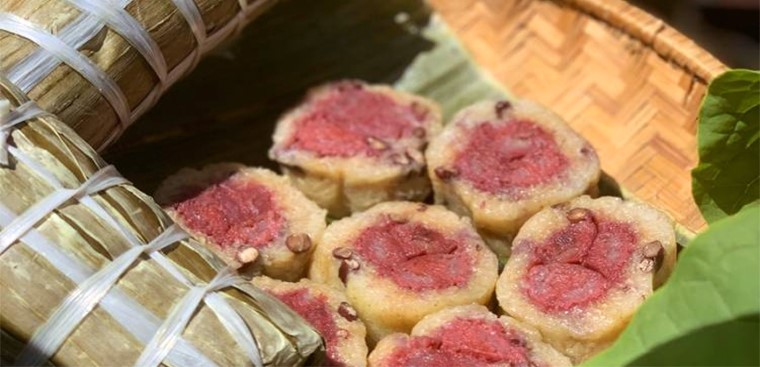
Ingredients
-
1 kg glutinous rice (sticky rice)
-
500 g black beans or red beans (pre-soaked and cooked)
-
12 ripe Siamese banana (or ripe burro bananas), peeled
-
100 ml coconut milk
-
3 pandan leaves, tied into a knot
-
2 teaspoons salt
-
3 tablespoons sugar
-
1 tablespoon rice wine (or light cooking wine)
-
8 large banana leaves (softened by blanching or steaming)
-
5 g string or twine for tying
Nutritional Information
For: Meat-eaters
Calories per serving: ~300–350 kcal (varies by portion size)
Key Nutrients:
1. Complex Carbohydrates
- Source: Glutinous rice, bananas, red beans/black beans
- Benefits: Provide sustained energy and dietary fiber for digestion
2. Plant-based Protein
- Source: Beans (đậu đỏ or đậu đen), coconut milk
- Benefits: Supports muscle repair and keeps you full longer
3. Potassium & Vitamin B6
- Source: Chuối sứ (Siamese banana)
- Benefits: Supports heart function and nervous system health
4. Medium-Chain Fatty Acids
- Source: Coconut milk
- Benefits: Easy-to-digest fats that help boost metabolism
5. Polyphenols
- Source: Bananas, beans, and rice bran
- Benefits: Antioxidant support for immune and cardiovascular health
1. Prepare the Ingredients
Rinse glutinous rice 4–5 times until the water runs clear. Soak it for 5–6 hours, then drain thoroughly.
Peel ripe chuối sứ (a type of Vietnamese plantain or cooking banana). Season the bananas with a pinch of salt, some sugar, and a splash of rice wine to enhance aroma and flavor. Rinse red beans (or black beans if preferred), remove damaged seeds and debris, then cook until soft.
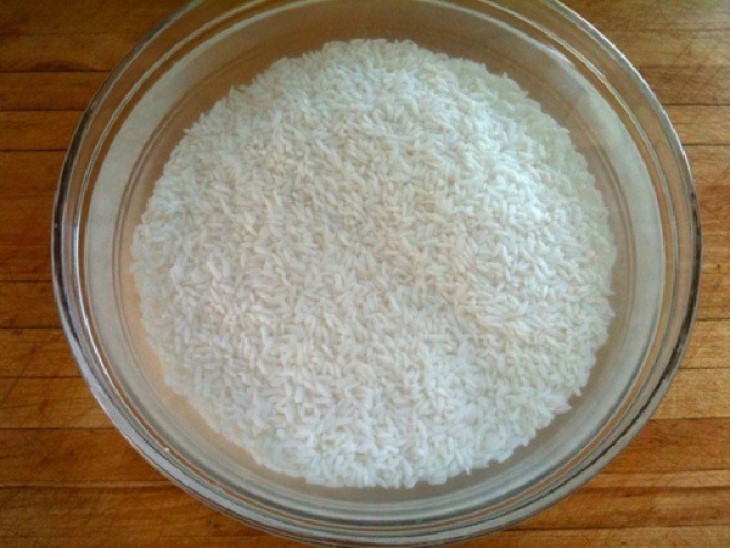
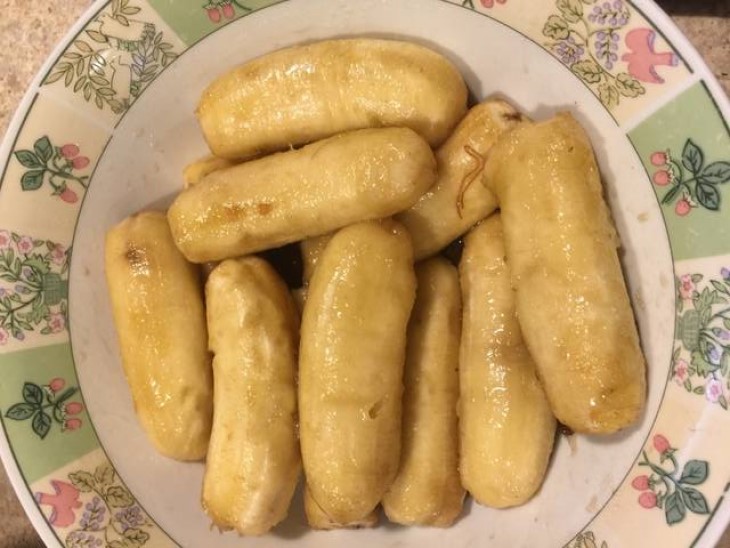
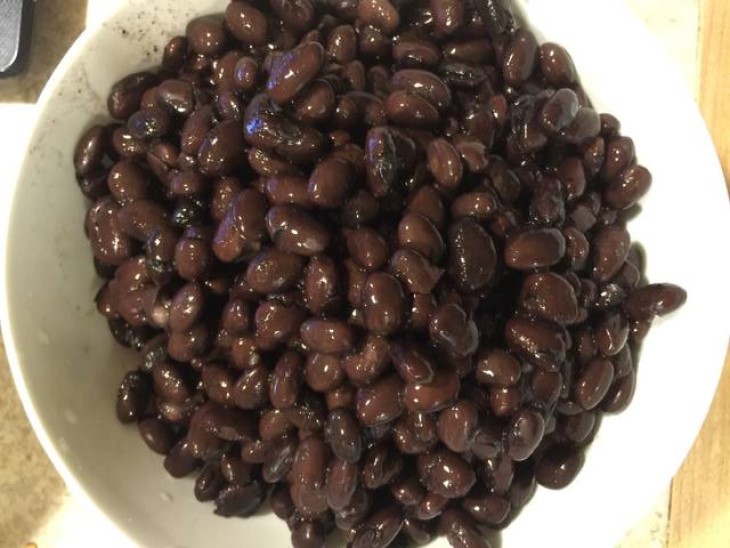
2. Cook the Sticky Rice with Pandan Leaf Juice
Wash pandan leaves and blend them with a bit of water. Strain to extract the juice.
In a large pan, combine the glutinous rice and cooked beans. Add coconut milk and pandan juice, stir and cook the mixture for about 15 minutes. Once partially absorbed, pour in a second portion of coconut milk, mix well, then turn off the heat.
Meanwhile, rinse banana leaves and sun-dry or briefly heat them to soften, making them more pliable for wrapping.
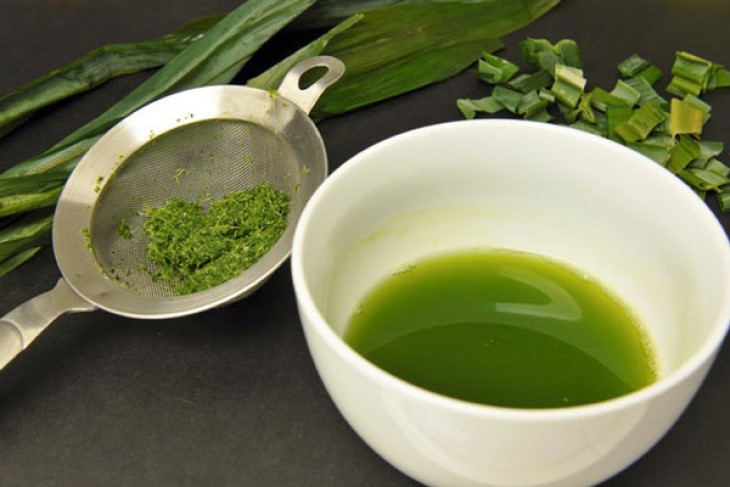
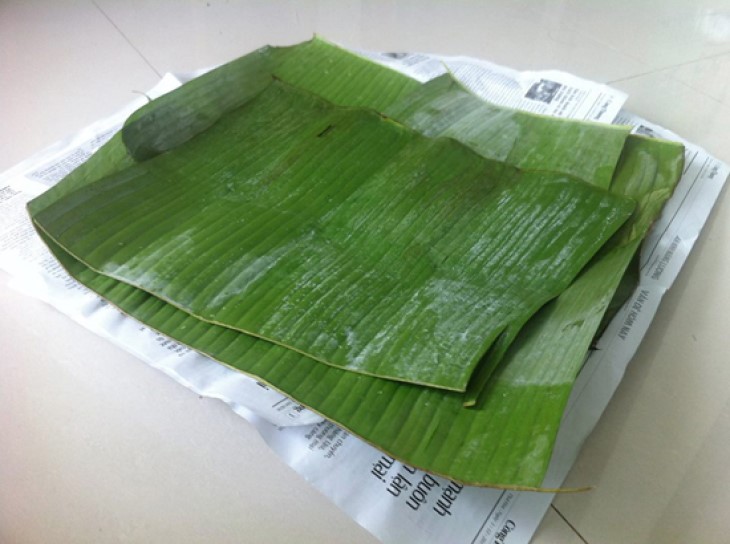
3. Wrap and Cook the Cakes
Spread a layer of sticky rice and beans onto the banana leaf. Place the banana filling in the center, then cover it with more sticky rice.
Wrap the cake tightly into the traditional cylindrical bánh tét shape, secure with twine.
Place the wrapped cakes into a large pot of boiling water and cook for 4–5 hours until fully done.
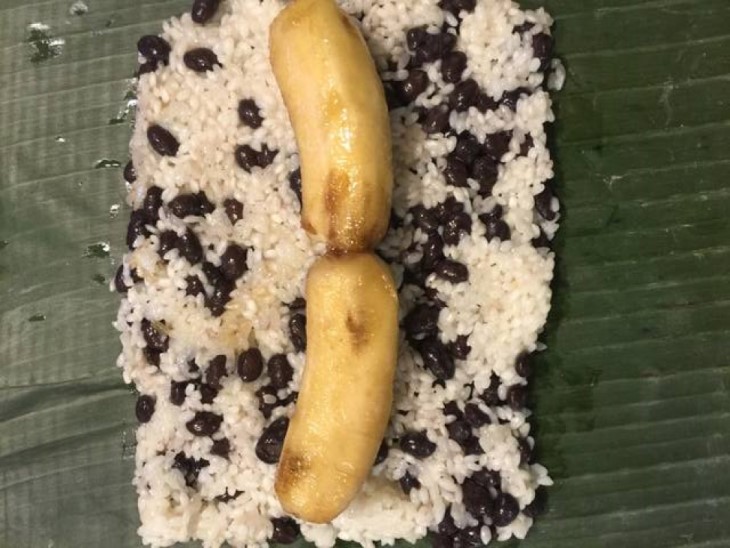
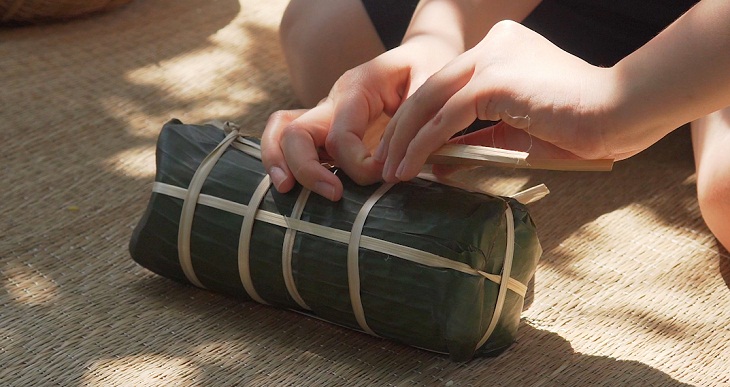
4: Finished Product
Bánh tét chuối is a cherished sweet sticky rice cake from southern Vietnam, especially the Mekong Delta. It features sweet ripe bananas at the core, surrounded by nutty red beans, fragrant coconut-infused sticky rice, and wrapped in banana leaves. The flavors are tender, sweet, and deeply aromatic — a beloved treat often enjoyed during Tết and family gatherings.

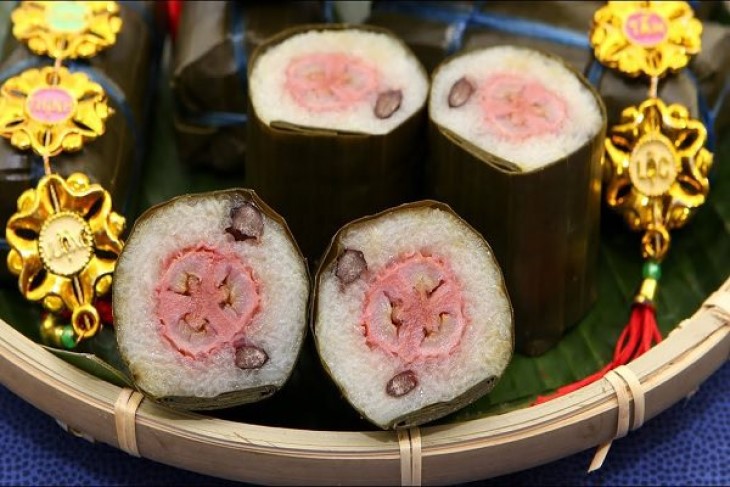
Bánh Tét Chuối – A Sweet Slice of the Mekong Delta
Vietnamese banana sticky rice logs were born from the Mekong Delta — where rivers mirror the sky, banana trees sway in the breeze, and life follows the rhythm of seasons and family rituals. In the quiet days leading up to Tết (Lunar New Year), families would gather around the wooden table, soaking glutinous rice, slicing ripe bananas, simmering coconut milk, and preparing mung beans or red beans. It wasn’t just cooking — it was storytelling, memory-making.
Unlike its savory sibling filled with pork and mung beans, this sweet version is layered with ripe bananas, red beans, and coconut-infused sticky rice, all wrapped in soft banana leaves. Each log is tied carefully with bamboo string and slowly boiled for hours over a wood fire. As the pot simmers, the fragrance of banana leaves, coconut, and rice drifts through the home — warm, sweet, and deeply nostalgic.
When sliced, the log glows softly — white grains glistening with coconut oil, purple streaks from the banana melting into the rice, and specks of red beans peeking through. The first bite is tender and slightly chewy — the rice yielding just enough before it releases its creamy sweetness. Then comes the banana: rich, caramelized, with a faint tang that cuts through the coconut’s smoothness. The beans bring an earthy depth, grounding the sweetness, while the faint smokiness from the boiled banana leaves lingers at the back of the tongue — like the scent of a distant wood fire.

It’s a dessert that doesn’t rush you. The sweetness unfolds slowly, gentle and comforting, like a conversation between generations. With each bite, you taste the softness of ripe fruit, the fullness of rice, the echo of fire and leaf — all blending into a warmth that feels almost human.
For generations, mothers and grandmothers have passed down the technique: how to soak the rice until it shines, how to wrap it tightly so the log keeps its shape, how to control the fire so the rice turns tender and creamy without burning. Every fold of the banana leaf, every knot of the string, carries the quiet love of those who came before.
Today, Vietnamese banana sticky rice logs are more than just a festive dessert — they are a symbol of southern Vietnam’s soul. Enjoyed with hot tea during family reunions or gifted to neighbors during the New Year, each slice is a memory you can hold — soft, fragrant, and shimmering with time. To eat it is to taste the tenderness of family, the patience of tradition, and the warmth of a homeland shaped by rivers, rice, and love.
